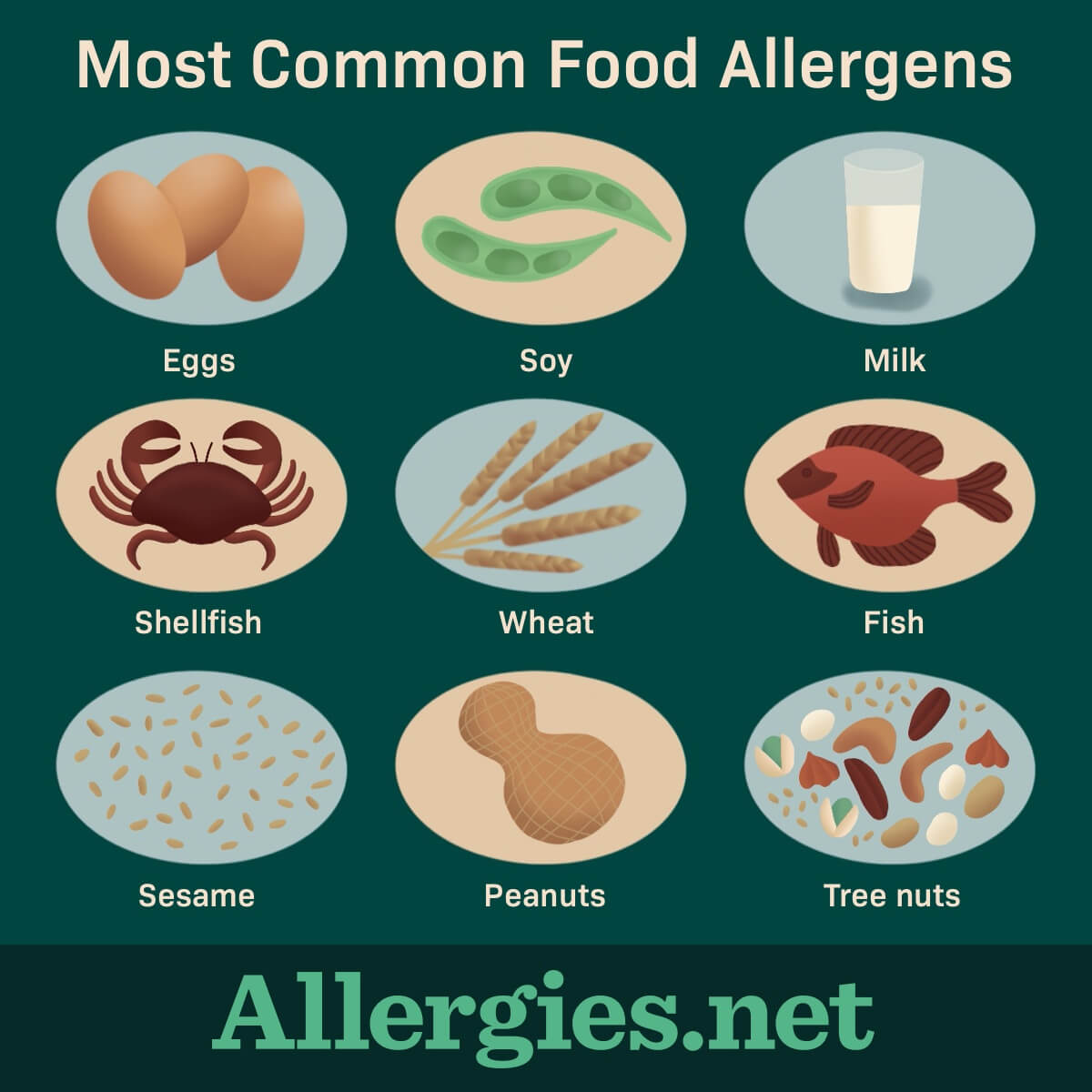Food Allergies
Reviewed by: HU Medical Review Board | Last reviewed: March 2022 | Last updated: April 2024
Food allergies affect about 32 million people in the United States. Roughly 10 in every 100 adults and 7 in every 100 children have a food allergy. This makes food allergies quite common.1
A food allergy may begin in infancy or crop up suddenly in adulthood. Some people even develop an allergy to foods they have eaten for years with no trouble.1
Is it a food allergy or a food intolerance?
Reactions to food are common, but not every reaction means you have a true food allergy. Many of these reactions are what is called an intolerance. What is the difference?
A food allergy means the immune system reacts to a food in ways that impact many organs in the body. Symptoms may range from mild to life-threatening. A food intolerance does not involve the immune system. Food intolerance reactions are usually milder and limited to digestive issues.2
People with a food allergy can react to even the smallest amounts of a food. Those with an intolerance may be able to eat small amounts of a food without trouble. Or, they may be able to take steps to prevent a reaction.2
Common food allergens
Any food can cause an allergic reaction, but 9 foods cause about 90 percent of all reactions. These include:1-3
- Eggs
- Milk
- Peanuts
- Tree nuts
- Fish
- Shellfish
- Wheat
- Soy
- Sesame
Sesame seeds and mustard seeds are considered common food allergies in other countries.1
The most common food allergies in children are milk, eggs, and peanuts. Children may outgrow their allergy to milk and eggs, while peanut and tree nut allergies tend to last.1
The most common food allergies in adults are raw fruits and vegetables, peanuts, tree nuts, fish, and shellfish. People who are allergic to 1 item in a food family, say shrimp, may also have problems with crustaceans like crab and lobster. Adult allergies tend to last.1
Less common food allergies
Other, less common or rare food allergies in the United States include:4
- Spices (coriander, garlic, mustard)
- Fruits (bananas, apples, peach, plum, tomatoes)
- Vegetables (corn, potatoes, carrots)
- Gelatin
- Seeds (sesame, sunflower, and poppy)
- Meat (beef, chicken, mutton, or pork)
Sesame is a common ingredient in some popular cuisines, so there is growing awareness of this allergy in the United States.4
Symptoms of food allergies
If someone eats a trigger food, symptoms tend to appear within minutes to 2 hours. Most of the time, the person will have a reaction every time the trigger food is eaten. Symptoms may include:1
- Vomiting, stomach cramps
- Hives
- Shortness of breath, wheezing, coughing
- Rapid, weak pulse
- Swelling of the throat, causing hoarseness or trouble swallowing
- Swelling of the tongue, affecting speech and breathing
- Pale, blue skin color
- Dizziness, fainting
Someone may have only 1 symptom or multiple ones. Symptoms may vary from 1 reaction to the next. It can be hard to predict how mild or severe your next reaction may be.1
Anaphylaxis is the most serious reaction to a food. This is a potentially life-threatening condition because breathing can be affected and the heart may stop.1
Diagnosing a food allergy
Diagnosing a food allergy begins with a trip to an allergist. First, they will ask detailed questions about your health history and conduct a physical exam. Be ready to answer:1
- What and how much you ate
- How long it took symptoms to develop
- What those symptoms were
- How long symptoms lasted
- How mild or severe the reaction was
- If there is a family history of allergies
- If you have eaten this food before or since the reaction
- Any other foods or exposures you might have had around the same time
Next, your doctor may order a variety of tests to confirm your allergy or find out if another health issue is causing your symptoms. These tests also may identify other allergies. Tests may include:1
- Blood tests
- Skin-prick tests
- Oral food challenge
Treating a food allergy
The main way people treat a food allergy is to avoid that food. This means carefully checking food labels and learning all the names a food may go by. Eating out requires special precautions, starting with researching the restaurant menu beforehand.1
People also carry epinephrine auto-injectors in case they accidentally eat a trigger food. This is a prescription drug used to treat anaphylaxis. Anaphylaxis is life-threatening and the most severe allergic reaction. Mild reactions may be treated with antihistamines.1-4
Allergy shots (immunotherapy), which build the body’s tolerance to an allergen, are not generally used for food allergies. This is due to the risk of triggering anaphylaxis if foods are injected into the body.1
There is research into using another form of immunotherapy to treat food allergies. This form, called sublingual (under the tongue) or oral immunotherapy, is being tested. Small doses of food are placed under the tongue or swallowed in gradually larger amounts. This idea is to build the body’s tolerance to that food.5,6
Doctors once recommended that children under age 5 avoid eating certain foods to reduce the chances of developing an allergy. Now, science shows that babies at high risk of developing food allergies – those with atopic dermatitis (eczema) or an egg allergy – should eat peanut products earlier. Studies found they were much less likely to develop a peanut allergy if fed peanut products early.5,6
